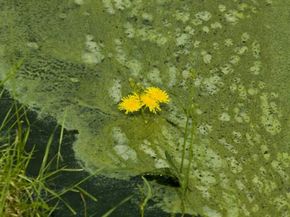What Makes Biodiesel From Algae So Exciting?
Replacing fossil fuels with algae, a renewable resource, to make biodiesel is an exciting possibility. Before we dive into the subject of algae biodiesel, let's get to know more about algae. More than 100,000 different species of plantlike organisms belong the algae family. They come in various forms and colors, from tiny protozoa floating in ponds to huge bunches of seaweed inhabiting the ocean. Leafy kelp, grassy moss and fungus growing on rocks are all forms of algae. You may even see algae in different colors such as red, green and brown. Algae are easy to grow and can be manipulated to produce huge amounts without disturbing any natural habitats or food sources. Algae are easy to please -- all they need are water, sunlight and carbon dioxide.
So, are algae all the same? Various algae contain different levels of oil. Of all the algae out there, pond scum -- algae that sit on top of ponds -- is best suited for biodiesel.
Advertisement
During the biodiesel production process, algae consume carbon dioxide. In other words, through photosynthesis, algae pull carbon dioxide from the air, replacing it with oxygen. For this reason, algae biodiesel manufacturers are building biodiesel plants close to energy manufacturing plants that produce lots of carbon dioxide. Recycling carbon dioxide reduces pollution.
How about some leftovers? Pressing algae creates a few more useful byproducts -- fertilizer and feedstock -- without depleting other food sources.
The most exciting part of algae biodiesel is the numbers game. Biodiesel makers claim they'll be able to produce more than 100,000 gallons of algae oil per acre per year depending on:
- The type of algae being used
- The way the algae is grown
- The method of oil extraction
Algae production has the potential to outperform other potential biodiesel products such as palm or corn. For example, a 100-acre algae biodiesel plant could potentially produce 10 million gallons of biodiesel in a single year. Experts estimate it will take 140 billion gallons of algae biodiesel to replace petroleum-based products each year. To reach this goal, algae biodiesel companies will only need about 95 million acres of land to build biodiesel plants, compared to billions of acres for other biodiesel products. Since algae can be grown anywhere indoors, it's a promising element in the race to produce a new fuel.
Extracting oil from algae may seem like a grimy job. So, let's roll up our sleeves and get into algae biodiesel engineering.
